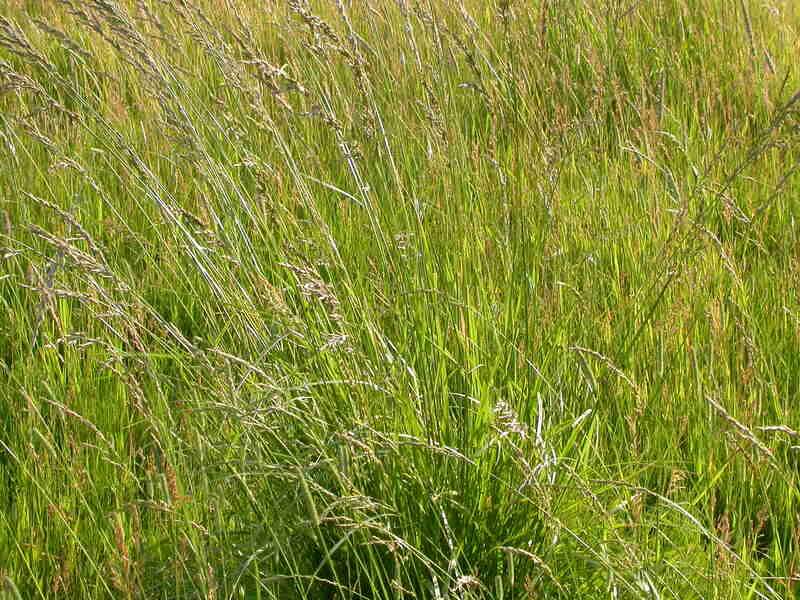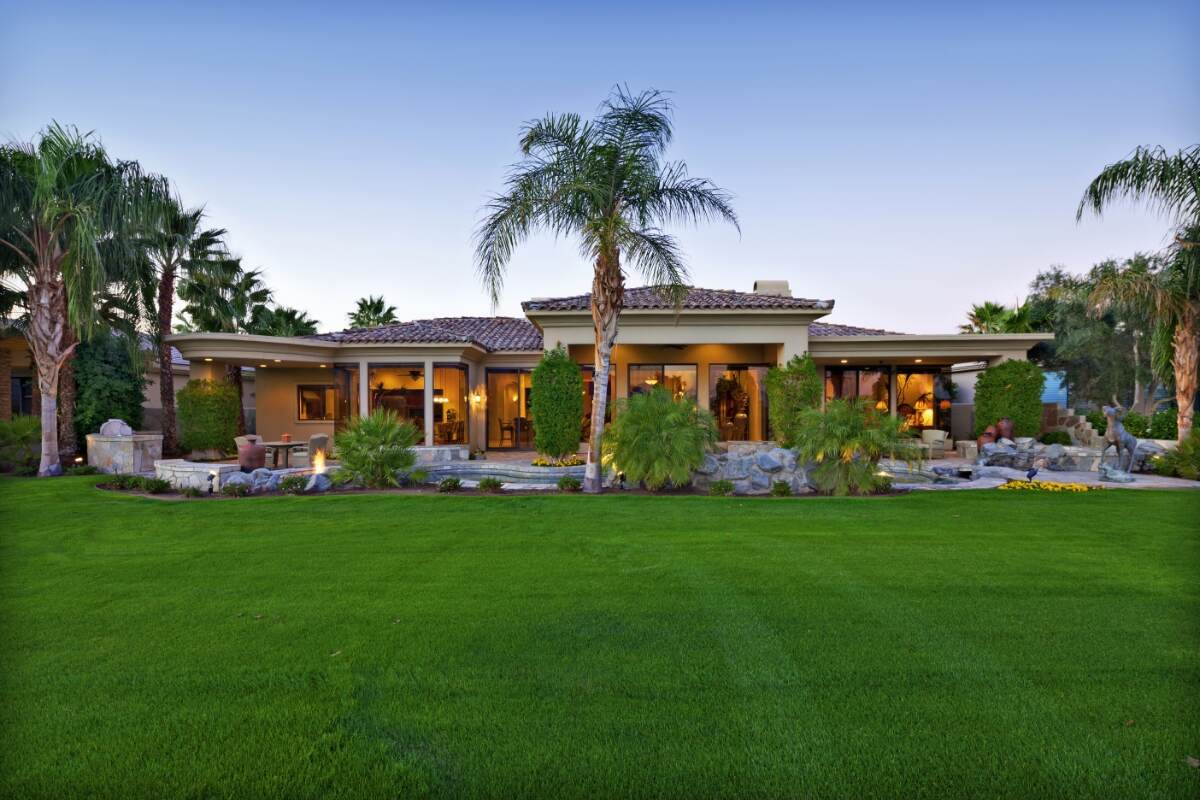
When most people think of sunny San Diego, California, they think of long days spent lounging on the beach. But residents of the area know that lawns provide opportunities for rest and relaxation, too, provided you have a full, healthy lawn. If your lawn is in need of an upgrade, here are the three best grass types for lawns in San Diego.
Bermudagrass

Photo Credit: rovenimages.com / Pexels
Bermudagrass is a very common grass type for most of the U.S. It’s a warm-season grass that needs a lot of sunlight, but it’s tough and resilient. Tolerant of heat, drought, traffic, and salt, this grass is a medium- to high-maintenance option for many lawns. It doesn’t handle cold temperatures very well and thrives in the southern part of the country.
Bermudagrass grows quickly and needs about an inch of water per week from rainfall or irrigation to thrive. It may need fertilizer or other soil amendments to look its best, but it spreads easily via stolons and rhizomes (above and below ground, respectively). So if you’re looking for durable grass, Bermudagrass might be a good pick for you.
- Classification: Warm-season grass
- Spreads by: Stolons and rhizomes
- Shade Tolerance: Low
- Drought Tolerance: High
- Foot Traffic Tolerance: High
- Maintenance Needs: High
- Mowing Height: 1-1.5 inches
- Potential for Disease: High; susceptible to dollar spot, spring dead spot, leaf spot, large patch, rust
- Color/Texture: Light to dark green; fine to medium leaf texture
Grass Seed Options:
– Pennington Bermudagrass Bare Spot (5 lb. bag)
– Pennington Smart Seed Bermudagrass Mix (8.75-lb. bag)
– Scotts Turf Builder Bermudagrass (10-lb. bag)
– Hancock Seed Co. Bermudagrass (50-lb. bag)
Tall Fescue

Photo Credit: Matt Lavin / Flickr / CC BY-SA 2.0
Tall fescue is a cool-season grass with good heat tolerance. It’s also shade, disease, and drought tolerant, so for San Diego yards with low to moderate amounts of shade, this grass type may be a good fit. Its self-repair is limited, so if it thins out, you may need to overseed.
Tall fescue establishes easily and germinates quickly, so within a few weeks of seeding, you should see some progress. Tall fescue grows deep roots, which help it to grab water and nutrients from deep within the soil. It also requires less fertilizer than other grass types and grows well in various soil types.
- Classification: Cool-season grass
- Spreads by: Bunch-forming grass
- Shade Tolerance: Moderate
- Drought Tolerance: High
- Foot Traffic Tolerance: High (must be overseeded if thinning occurs)
- Maintenance Needs: Low
- Mowing Height: 1.5-3 inches
- Potential for Disease: Low; susceptible to brown patch
- Color/Texture: Dark-green; coarse texture
Grass Seed Options:
– Triple-Play Tall Fescue Grass Seed Blend (5000 sq ft)
– Eretz Kentucky 31 K31 Tall Fescue Grass Seed (choose your size)
– Pennington The Rebels Tall Fescue Grass Seed Mix (7 lb.)
St. Augustinegrass

Photo Credit: Yercaud-elango / Wikimedia Commons / CC BY-SA 4.0
St. Augustinegrass is a great pick for warm areas. This grass does not do well with cold temperatures, but it is moderately drought tolerant, so the Southern California climate is a perfect fit. It’s a quick-growing grass that does well in moderately shady areas. St. Augustinegrass spreads via above-ground stolons and has a somewhat dense growth habit.
As a moderate-maintenance turfgrass, expect to mow St. Augustinegrass regularly and fertilize during the growing season (approximately March through October). However, don’t cut it less than 1 inch when you mow, as you risk placing too much stress on the grass. Mowing too low weakens the turf and may make it more susceptible to weeds, pests, or disease.
St. Augustinegrass doesn’t hold up under very high traffic, so if you have more than the normal wear and tear on your lawn, you may need to consider another option.
- Classification: Warm-season grass
- Spreads by: Stolons
- Shade Tolerance: Low to moderate
- Drought Tolerance: Moderate
- Foot Traffic Tolerance: Moderate
- Maintenance Needs: Moderate
- Mowing Height: 1-2 inches
- Potential for Disease: High; susceptible to take-all root rot, brown patch, gray leaf spot, pythium root rot, fairy ring
- Color/Texture: Blue-green, coarse texture
Grass Plug Options:
– Seed Ranch St Augustine Seville Grass Plugs (2 Trays)
– Seed Ranch St Augustine Floratam Grass Plugs (2 Trays)
How to Choose the Best Grass for Your San Diego Yard
Soil Type
The first step to a healthy lawn is knowing your soil. The southern part of California consists mainly of clay soil. Being close to the coastline, clay soil helps retain essential nutrients due to poor drainage but can contain high amounts of sea salt that can harm plants.
Know the nutrients your soil currently contains by doing a soil test, as this will help you to determine the fertilizer you’ll need for optimal grass growth. The exact look and feel of your lawn will depend on the grass type you choose, but a lush, green yard is attainable no matter what type you go with.
Here are other factors that are important when choosing the best grass for your San Diego yard.
Heavy-Traffic vs. Low-Traffic Areas
While some homeowners want to enjoy low-level activities in their grass, such as yoga, some will be actively involved in their yards, playing sports with their children. Therefore, they will need grass that can withstand constant foot traffic from pets and people. Here is how these grasses measure up.
Best grass types for high-traffic areas:
- Bermudagrass and tall fescue
Best grass types for low to moderate traffic:
- St. Augustinegrass
How Much Maintenance?
If you want to take pleasure in the beautiful weather that San Diego provides year-round, the last thing you want to do is work hard to keep your grass looking good. Instead, you will likely want to enjoy the beauty of your grass while also enjoying the weather. Here are the grasses with the highest and lowest maintenance requirements.
High-maintenance:
- Bermudagrass
Low to moderate maintenance:
- St. Augustinegrass and tall fescue
Sun vs. Shade
One more important factor to consider is how much sun or shade your grass will receive. If you have a lawn shaded by trees or buildings for most of the day, consider a grass type with a moderate shade tolerance. However, if you have a yard that is exposed to full sunlight most of the year, choosing a grass that loves the sun is a great choice.
Grasses with moderate shade tolerance:
- Tall Fescue
Grasses with low to moderate shade tolerance:
- Bermudagrass
- St. Augustinegrass
If you’d like to explore other options, grass alternatives work well for some homeowners. These grass alternatives include artificial turf, ground cover, and ornamental grasses, to name a few. However, keep in mind that only some of these alternatives raise property value.
Call in the Pros
When you are ready to grow the best grass type for your San Diego lawn, don’t go it alone. A San Diego lawn care expert can help you select the best grass type for your yard and lifestyle. Then, let our pros cut and maintain your lawn going forward to enjoy a healthy stand of grass year-round.
LawnStarter participates in the Amazon Services LLC Associates Program, an affiliate advertising program. LawnStarter earns revenue from products promoted in this article.
Main Image Credit: Ochir-Erdene Oyunmedeg / Unsplash




